Can I Get Social Security Disability Benefits for Diabetes?
- How Does the Social Security Administration Decide if I Qualify for Disability Benefits for Diabetes?
- About Diabetes and Disability
- Winning Social Security Disability Benefits for Diabetes by Meeting a Listing
- Residual Functional Capacity Assessment for Diabetes
- Getting Your Doctor’s Opinion About What You Can Still Do
Winning Social Security Disability Benefits for Diabetes by Meeting a Listing
To determine whether you are disabled at Step 3 of the Sequential Evaluation Process, the Social Security Administration will consider whether your diabetes is severe enough to meet or equal the diabetes listing. The Social Security Administration has developed a set of rules called Listing of Impairments for most common impairments. The listing for each impairment describes a degree of severity that the Social Security Administration presumes would prevent a person from performing substantial work. If your diabetes is severe enough to meet or equal the diabetes listing, you will be eligible for disability benefits.
The listing for diabetes is 9.08, which has three parts: A, B, and C. You will be disabled if you meet either part A, part B, or Part C.
Meeting Social Security Administration Listing 9.08A for Diabetes
You will be disabled if you are diagnosed with diabetes mellitus and have:
Neuropathy demonstrated by significant and persistent disorganization of motor function in two extremities resulting in sustained disturbance of gross and dexterous movements, or gait and station.
Disorganization of Motor Function
Disorganization of motor function has a broad meaning. It includes difficulty using the hands, standing, or walking, and impairments caused by tremor, weakness (paresis or paralysis), sensory loss, or involuntary movements. In diabetics, the abnormal motor function is usually loss of feeling (numbness) and loss of position sense in the feet and legs. The upper extremities (arms and hands) are less frequently involved.
Significant
“Significant” means worse than “not severe” (mild, slight). “Persistent” means that the 12 month duration requirement has been satisfied or is likely to be satisfied. From a practical standpoint, if you have significant peripheral neuropathy, you will usually satisfy duration. If the disability adjudicator feels unsure if duration will be satisfied, your case should be held (diaried) for 3 months and your condition reconsidered to see if there is a definite trend in improvement that could justify an opinion that your condition is not persistent.
Sustained Disturbance of Gross and Dexterous Movements
“Sustained disturbance of gross and dexterous movements” means function of the upper extremities (arms, hands, and fingers). Gross movements are things like grasping large objects, pushing, and pulling. Dexterous movements are smaller spatial movements of the fingers that require more delicacy and coordination, such as picking up coins or pens, writing, playing musical instruments, turning instrument knobs for precise settings, and assembling or soldering small electronic parts.
Physicians performing physical examinations can test fine, coordinated movements. One common test is to ask you to sequentially touch the tip of each finger to the thumb. Some people can do this test, but very slowly and clumsily. If you are only able to do the test this way, you should not be considered to have dexterous movements intact. For example, a 3 second struggle to touch the little finger to the thumb is not a meaningful dexterous movement. Your report of your activities of daily living to the Social Security Administration when you apply for Social Security disability benefits can be very helpful. Your treating physician may not know enough about any problems you have with the use of your hands and arms to help the Social Security Administration in its disability determination. For example, you should be asked about your ability to pick up coins, button shirts, and tie shoelaces. All of these require dexterous movements, and you may have other examples of specific activities you have difficulty performing.
Sustained Disturbance of Gait and Station
“Sustained disturbance of gait and station” means difficulty walking and standing. You may be unable to stand with your feet together, walk placing one foot in front of the other (tandem gait), or balance on one foot. Or your gait may be wide-based with your legs and feet abnormally separated to maintain balance. When you lose the position sense in your legs, you must use visual cues to walk and this is difficult. However, part A does not require that you be paralyzed, unable to walk, or that you need any type of hand-held assistive device. Medical judgment must be applied. If you have mild diabetes, normal muscle tone and strength, normal reflexes, and normal sensation and position sense, then there is no clinical evidence of significant peripheral neuropathy and allegations that you have functional difficulty are less credible.
Meeting Listing 9.08B for Diabetes
You will be disabled under listing 9.08B if your diabetes is so severe that you experience:
Acidosis occurring at least on the average of once every 2 months documented by appropriate blood chemical tests (pH or pC02 or bicarbonate levels).
Acidosis means ketoacidosis. You would need to be hospitalized during these events. This listing requires arterial blood gas study (ABGS) measurements showing acidity by low pH, low bicarbonate, or decreased carbon dioxide. The listing does not specify what these values must be, but clearly they must be outside of the normal range of values used by your hospital. A pH of less than 7.3 and H2CO3 less than 15 meq/L would establish acidosis, but medical judgment using all the facts in the case must be applied to determine if ketoacidosis is present.
The blood glucose generally exceeds 250 mg/dL in ketoacidosis.
The Social Security Administration does not require measurement of ketones in urine (ketonuria) or plasma (ketonemia), although that information is useful and may very well be in your medical evidence.
You are most likely to satisfy part B if you have brittle diabetes.
Meeting Listing 9.08C for Diabetes
You will be disabled under listing 9.08C if you are diagnosed with diabetes mellitus and retinitis proliferans. Your visual impairment will be evaluated under the criteria in listings 2.02, 2.03, or 2.04 which provide:
Listing 2.02 Loss of Visual Acuity. Remaining vision in the better eye after best correction is 20/200 or less.
Listing 2.03 Contraction of the Visual Field in the Better Eye.
A. The widest diameter subtending an angle around the point of fixation no greater than 20 degrees;
OR
B. A mean deviation of -22 or worse, determined by automated static threshold perimetry as described in 2.00A6a (v);
OR
C. A visual field efficiency of 20 percent or less as determined by kinetic perimetry (see 2.00 A7b).
Listing 2.04 Loss of Visual Efficiency.
Visual efficiency of the better eye of 20 percent or less after best correction (see 2.00A7c).
Diabetes mellitus is a major cause of various degrees of blindness and produces diabetic retinopathy (see Figures 3 – 7 below). In advanced proliferative diabetic retinopathy (retinitis proliferans) there is excessive new blood vessel growth in the retina (“neovascularization”). Advanced proliferative diabetic retinopathy can affect both visual acuity (sharpness of vision; ability to distinguish letters and numbers at a given distance) and peripheral vision (the ability to see objects at the edge of the visual field). Proliferative retinopathy can lead to a detached retina and bleeding into the retina or the vitreous humor that fills most of the eye. The vitreous humor is the gel-like clear substance between the lens and the retina.
Eventually proliferative retinopathy can lead to scarring and loss of peripheral vision. Proliferative retinopathy is treated with laser surgery in which small burn holes are placed in the retina to stop the advancement of the disease. It is not always successful.
Small pinpoint hemorrhages in the retina are an early form of diabetic retinopathy and do not necessarily impair vision. Visual acuity can fluctuate in diabetics who have poorly controlled blood glucose levels even when they don’t have much retinal damage. This fluctuation will correct itself when the diabetes is adequately controlled. However, macular edema (swelling) and progressive retinopathy can result in unstable acuities quite apart from blood glucose levels.
If you have proliferative retinopathy, the Social Security Administration should measure your visual fields, unless there is a good reason to think they are not affected, such as a statement from your treating ophthalmologist that visual fields were measured and are not affected. If you have proliferative retinopathy, you can have a significant visual field deficit even if you have normal visual acuity. Treating physician statements about visual field status without actual testing are nothing but guesses and should not be used to disallow a claim.
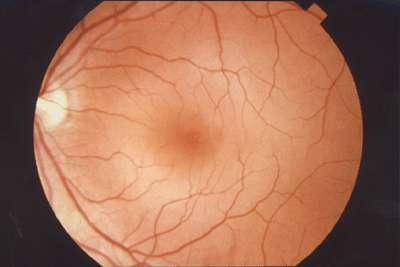
Figure 3: The normal fundus of the eye in a non-diabetic person.
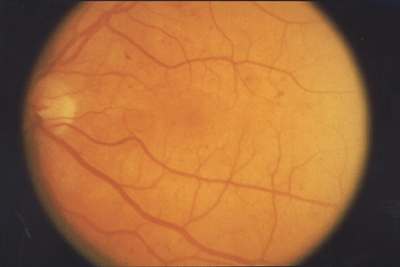
Figure 4: The fundus of the eye undergoing mild diabetic changes.
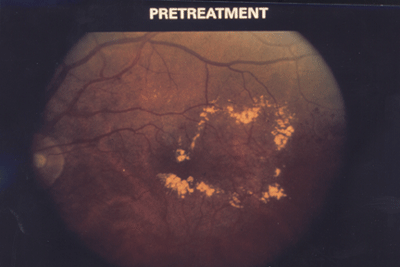
Figure 5: Macular edema (diabetic retinopathy) further affecting the fundus of the eye.
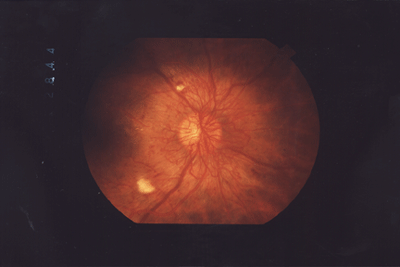
Figure 6: Excessive growth of new blood vessels in the retina due to proliferative diabetic retinopathy.
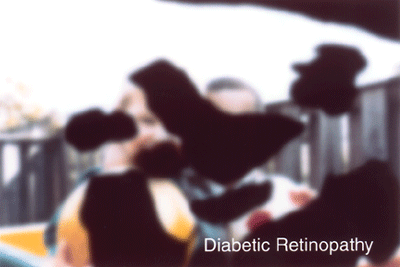
Figure 7: Eyesight worsens significantly with the onset of advanced diabetic retinopathy.
Equaling a Listing With a Combination of Impairments from Diabetes
Diabetes mellitus is a multi-faceted disease. Even if you don’t meet one of the diabetes listings, you may still be found disabled at Step 3 of the Sequential Evaluation Process. You may have a combination of impairments that together equal the severity of disability of a listing. For example, you may have autonomic neuropathy with hospitalizations for gastric paralysis or dizziness from low blood pressure related to autonomic insufficiency affecting the arterial vascular bed; or an enlarged heart, with coronary artery disease, etc. See Complications of Diabetes.
Continue to Residual Functional Capacity Assessment for Diabetes.
Go back to About Diabetes and Disability.
